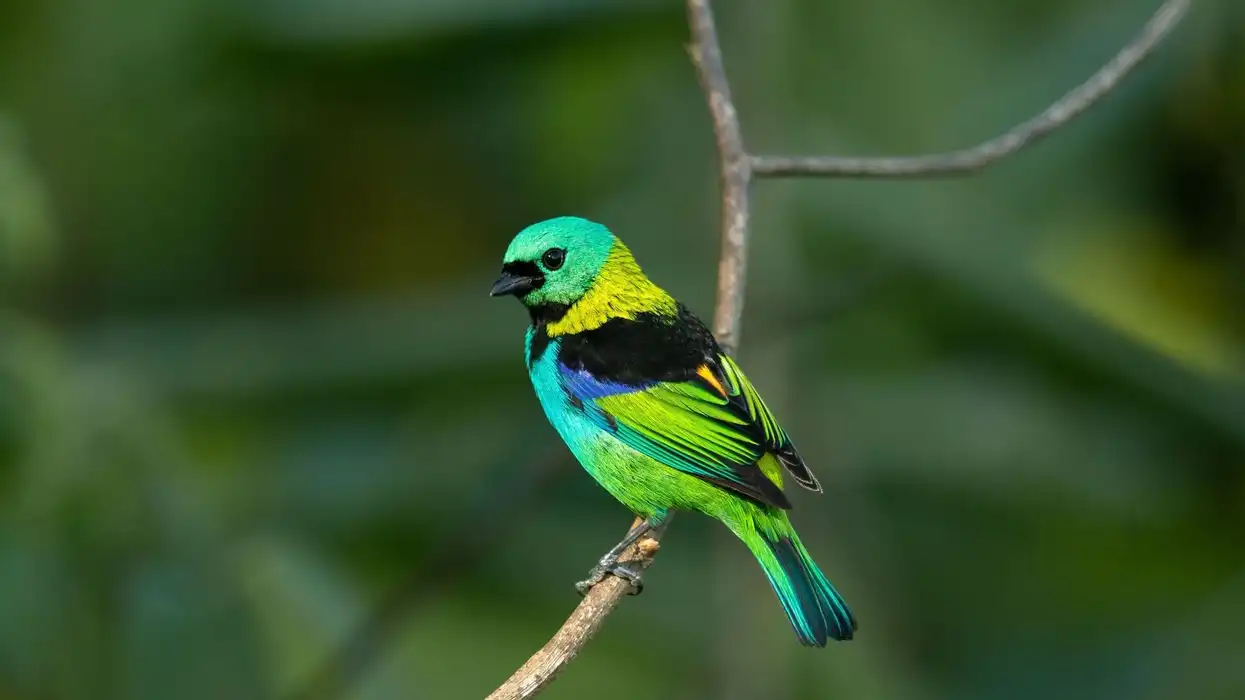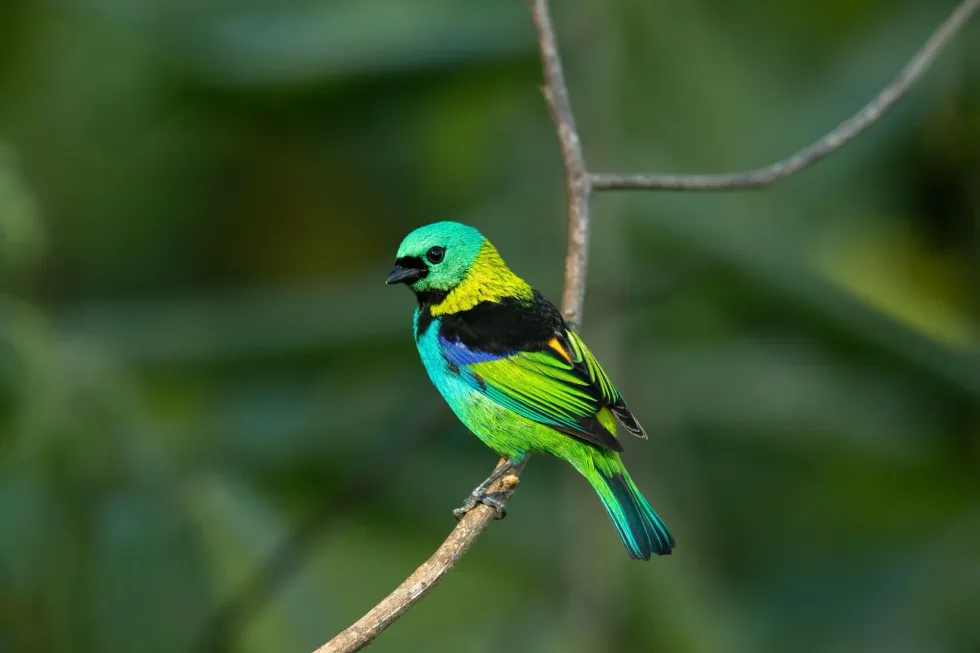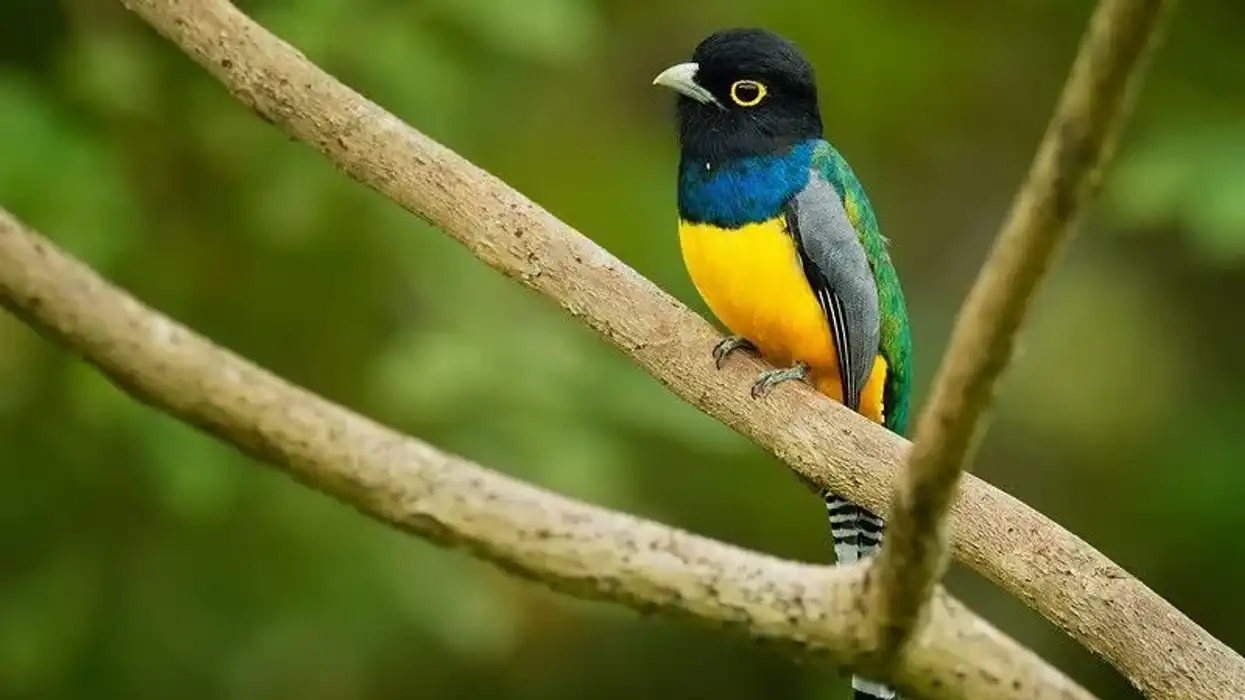The seven-colored tanager (scientific name - Tangara fastuosa), is a small bird species that is endemic to Brazil and can be found in the eastern regions of the country. These birds are brightly colored and are an absolute treat for avid birdwatchers to spot.
However, this brightly colored plumage has also caused their population to decline as they are often captured from their native eastern Brazilian habitats and sold in the pet trade, which has caused a steep decline in their wildlife habitats.
Currently, these brightly colored birds are listed as a vulnerable species and their protection has been an issue that has led to several organizations taking part in reestablishing caged birds into the wild in an effort to get their population back to a stable number.
Hopefully, with these conservation efforts in place, this species will get back to its thriving population and once again become a part of the ecosystem.
If you like these true facts about seven-colored tanager, be sure to check out these facts about the umbrellabird and the blue jay too!
Seven-Colored Tanager Interesting Facts
What type of animal is a seven-colored tanager?
The seven-colored tanager (Tangara fastuosa) is a brightly colored bird species that is unique because of its various colorations and is endemic to Brazil where it is often found as a caged bird that has been slowly reintroduced back into the wild due to a rapid decline in the population distribution of breeding and non-breeding birds that has left them being exposed to extinction.
What class of animal does a seven-colored tanager belong to?
The seven-colored tanager belongs to the Aves class of animals. These birds belong to the Thraupidae family, genus Tangara that contains 27 species of birds that are native to Neotropic regions, especially the Atlantic forests.
How many seven-colored tanagers are there in the world?
Currently, the seven-colored tanager species has a small population in its native habitat range of Brazil, and according to IUCN Red List, the current population count of this bird species that occurs naturally in its range is estimated between 2,500-9,999 breeding and non-breeding mature individuals that occur in groups or alone.
This population count is taken from various feeding grounds that occur in forests and other habitat range, and this estimate, including the juveniles and chicks.
This rapid decline in population is due to poor conservation efforts in native forests and nesting sites, as they are captured from these sites and are used in the bird trade.
Where does a seven-colored tanager live?
The seven-colored tanager (Tangara fastuosa) is mostly found in second-growth forests and resides in the humid coastal forests of the Atlantic coast in northeastern Brazil.
The range map of these birds is huge as they have a scattered population distribution which they use as foraging and nesting sites.
There is an abundance of these bird species at lower tropical zones and it occurs from lowlands to 1902.89 ft (580 m) elevations, and it also occurs in higher elevations, in areas like Pernambuco and the Atlantic forest zoogeographic regions where they can be seen foraging in pairs or can be found in mixed-species flocks.
What is a seven-colored tanager's habitat?
This bright plumaged bird has a variety of habitat ranges within Brazil, especially in the Atlantic forest regions, where they make their nests in trees, montane forests, and orchards, that usually lie in humid canopies and evergreen forest regions.
These birds prefer sites that are located in a canopy with an abundance of bromeliads which they used in decorating their nests.
Who do seven-colored tanagers live with?
These are a social species of birds and can be found in pairs or small groups that usually consist of up to four birds, or they can also be found in mixed-species flocks in which they share their habitat range with another family of birds.
The flock of this endemic bird in Atlantic forests and canopy regions, among other parts of the range map, usually happens in a group of 12 individuals.
How long does a seven-colored tanager live?
The lifespan of this species of birds is currently unknown, however, according to IUCN Red List, these birds have a generation gap of 4.9 years.
How do they reproduce?
Seven-colored tanagers attain sexual maturity when they reach 12 months of age. The mating season for these species takes place between March and April in their native habitat range of the Atlantic forests in Brazil.
During the mating period, the male courts the female with a simple ceremony where it displays the bright rump spot.
If the female is receptive, she will allow the male to mate with her and after successful fertilization, both the male and the female will participate in the creates of nests in arboreal bromeliads at an elevation of 26-50 ft (8-15 m) and in trees including banana bunches.
The nests are cup-shaped and are filled with seeds, barks, dried and green leaves.
After the nests in the trees have been made, female tanagers will lay three to four eggs (in captivity) and will incubate the eggs for 15-17 days.
Both parents participate in the feeding of the nestlings, and in some cases, groups of juveniles will also take a lesson from the adults and will help in feeding the nestlings by providing them seeds and fruits.
What is their conservation status?
Seven-colored tanagers are listed as a Vulnerable species on the IUCN Red List due to their use in the pet trade in Brazil. Throughout their history, these birds have been taken from their nest in trees and from the first or second-growth forests and turned into caged birds because of their multi-colored plumage.
Seven-Colored Tanager Fun Facts
What do seven-colored tanagers look like?

The seven-colored tanager (Tangara fastuosa) species is one of the most colorful bird species in the world and they are known for their turquoise-green head, a shiny bluish breast, pale turquoise blue wings with orange edges, and a bright orange rump and lower back.
The female tanager has a duller color tone in comparison to the male, making it easy to distinguish between the two sexes.
How cute are they?
These brightly colored bird species are extremely cute as they can be seen hopping around to get from one place to another!
How do they communicate?
Seven-colored tanagers use a series of chirps to communicate with each other, this vocalization is also common when these birds are forming pairs during the mating season.
How big is a seven-colored tanager?
Fully grown adults reach a body height of 5.1-5.3 in (13-13.5 cm), the wingspan is unknown. Compared to other classes like the rufous hummingbird, which has a body length of 2.8-3.6 in (7.3-9.1 cm), the seven-colored tanager is a bit larger.
How fast can a seven-colored tanager fly?
The seven-colored tanagers' flying speed is unknown.
How much does a seven-colored tanager weigh?
These small birds weigh between 0.7-0.8 oz (21-24 g).
What are the male and female names of the species?
No specific name is applicable to either sex.
What would you call a baby seven-colored tanager?
A baby seven-colored tanager is called a chick.
What do they eat?
The diet of the seven-colored tanager consists of fruits, berries, and seeds.
When fruits, berries, leaves of trees, and seeds are not easily available, they feed on insects and spiders which are also a part of their diet.
Are they poisonous?
No, these birds are not poisonous.
Would they make a good pet?
Yes, these birds can make excellent pets. However, it is inadvisable to keep them as pets as they are protected by organizations like SAVE Brasil which protects their use in the pet trade.
Did you know...
These birds are often confused with the green-headed tanager species that are known in Portuguese are known as 'saíra-sete-cores', which translates to seven-colored tanager.
Ocelots and snakes are two of the most common predators of these birds.
Are seven-colored tanagers endangered?
The seven-colored tanager (Tangara fastuosa) is not endangered at the moment but it is close as it currently sits on the vulnerable species list.
Due to this, they are now a rare bird in the Atlantic forests, and organizations like SAVE Brasil are participating in the protection of this endemic bird and helping them to rediscover their place in the ecosystem in order to experience a growth that will hopefully take them back to their prior population.
How did seven-colored tanagers get their name?
These residents of the Atlantic forest regions get their name from their seven-colored plumage which includes the colors turquoise-green, range, black, dark blue, brilliant blue, pale turquoise-blue, and ultramarine blue.
Here at Kidadl, we have carefully created lots of interesting family-friendly animal facts for everyone to discover! Learn more about some other birds from our Amazon parrot facts and toco toucan facts pages.
You can even occupy yourself at home by coloring in one of our free printable bird coloring pages.
Second image by Manuel Anastácio.










